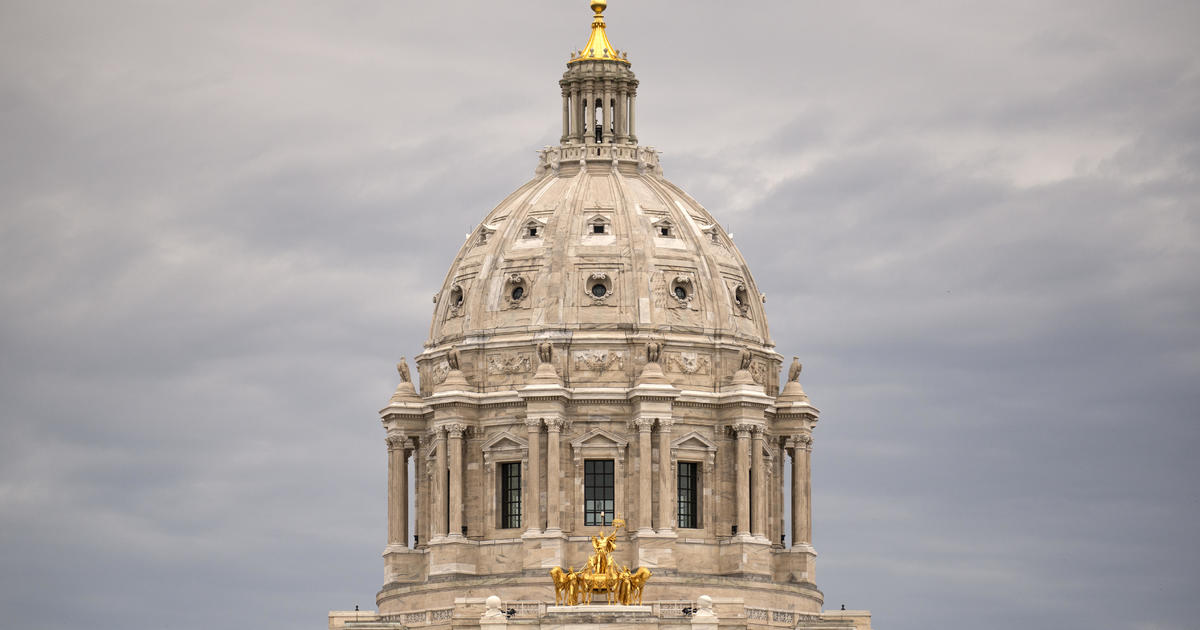Good Question: Amid Hispanic Heritage Month, what's Minnesota's Latino history?
MINNEAPOLIS (WCCO) - Hispanic Heritage Month is being celebrated across the country through October 15. It's a time to recognize the cultures and contributions of Americans whose ancestors came from Spain, Mexico, the Caribbean, and Central and South America.
In Minnesota, that's a population that's diverse and growing.
So, what is Minnesota's Latino history? And, what does the population look like now? Good Questions.
According to the 2020 U.S. Census, 6.1% of Minnesotans identified as Latino or Hispanic. That's up from 3% in 2000 and 0.9% in 1980. There are now 300,000 Minnesota who are Latino. By 2035, that number is expected to rise to half-a-million people.
"Latinos are an ethnic group, not a racial group, so we have Afro-Latinos who come from the Caribbean and other countries," says Ruby Azurdia-Lee, President of Comunidades Latinas Unidas en Servicio (CLUES), an organization that provides culturally and linguistically relevant social services on the west side of St. Paul. "We have indigenous people, we have people with white skin, [and] fair skin."
Azurdia-Lee came to Minnesota in 1978 as an exchange student from Guatemala.
"A lot of times in the 80s, telling stories about who I was was important because people did not understand the diversity in the Latino culture," she says.
According the Minnesota State Demographic Center, 66% of Latinos in Minnesota are of Mexican descent, followed by Puerto Rico (6%), Ecuador (4%), Guatemala (4%), El Salvador (3%), Cuba (3%), Colombia (2%), Argentina (2%), Honduras (2%), Spain (2%) and more.
That's a different demographic make-up compared to when John Pacheco grew up in south Minneapolis in the 1960s. His grandparents came to the Upper Midwest from Mexico in the 1920s to work along the railroad and in the sugar beet fields.
"When I was growing up, it was predominantly a Mexican community," says Pacheco, President of Latino Chamber of Commerce Minnesota. "People predominantly refer to the west side in St. Paul, but there was a pretty good size in Minneapolis as well."
Throughout the 1920s through 1950s, migrants from Mexico came to Minnesota for jobs in industry and agriculture, according to Jimmy Patino, a professor of Chicano and Latino Studies at the University of Minnesota.
Patino says in the 1960s, along with the rise of the Civil Rights Movement, was the rise of the Chicano movement emanating out of the west side of St. Paul. Out of that came the introduction of the Chicano Studies department of the University of Minnesota and organizations like CLUES.
"It was to say, we're permanent, we've been here," says Patino.
In the 1980s, political and economic turmoil in Central America brought more people from those countries to the U.S., including Minnesota. More Cubans also made their way to the upper Midwest during that time.
"That's when the primarily Mexican community becomes more diversified," Patino says.
According to the Minnesota State Demographic Center, 47% of Latinos currently living in Minnesota were born in the state, 21% were born in another state and 32% were born outside of the U.S.
These families live across Minnesota, with diverse and growing populations in cities like Worthington, Owatonna, St. Cloud, Willmar and Austin.
Julieta Cervantes, 25, grew up in Austin. Her mother and many of her family members have worked at the Hormel plant for years. As a little girl in elementary school there, she says she was one of the few non-white faces in the classroom.
"Since I was growing up, I saw this explosion of our Latino community, of Latino businesses, of Latino folks being more visible in the community," Cervantes says. "So it's been an amazing growth to see."
About 38% of Latinos in Minnesota are under the age of 18, according to the MN State Demographic Center.
"We have a young population," says Azurdia-Lee. "They're the future voters, workers and consumers, of course."
As for Cervantes, she says while she knows there is plenty of room to grow in terms of representation and power, she's excited for the future.
"I have a lot of ambition for our community," she says.



